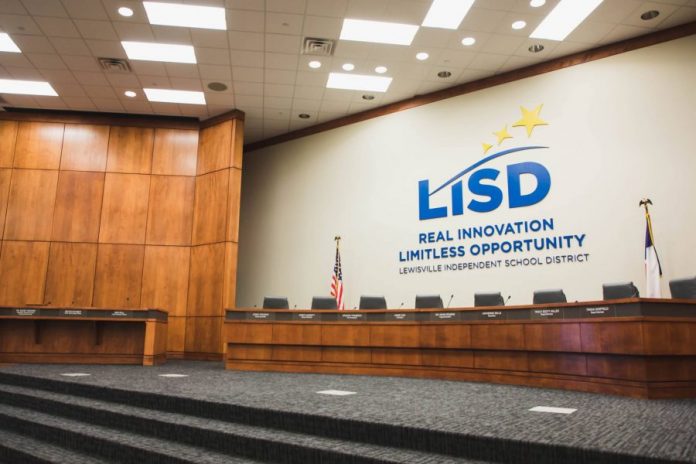On Monday, the Lewisville ISD Board of Trustees adopted a tax rate of $1.1178 for the 2024-25 school year, which is more than a 1 cent decrease from the previous year.
The new rate will mean a savings of nearly $200 a year to the average LISD homeowner, according to a LISD news release.
“Due to the outstanding financial management by the Board of Trustees, the district is able to implement the approved 2023 and 2024 Bond Programs and meet existing debt payments while still lowering the Interest and Sinking (I&S) tax rate by 1 cent,” the district said in a statement. “The district currently projects a $4.5 million deficit for fiscal year 2025. The Legislature’s inaction to adjust public school funding for inflation during the 88th Legislative Session in spring 2023 has created difficult budget scenarios for school districts across the state. The state sets the Maintenance and Operations (M&O) tax rate for all school districts.
“The district spent the last several months cutting costs through staff attrition, central office budget reductions, and middle school schedule adjustments to reduce expenses. LISD was unable to provide raises for staff as part of the 2024-25 budget. Prior to these efforts, LISD anticipated a deficit of as much as $14M.”
While the decreased tax rate is a positive for taxpayers, the district is still dealing with the impact of a lack of funding from the state. Lewisville ISD is just one of many school districts across the state to adopt a deficit budget due to the state’s underfunding of public schools, according to the district. The state legislature would need to increase per-student funding, or the basic allotment, by more than $1,000 just to keep pace with inflation. Since 2020, the district has seen dramatic cost increases beyond its control, including a 113% increase in property insurance, a 61% increase in electricity, and a 52% increase in gas costs.
“We absolutely have a crisis in our state when it comes to public school funding,” said Superintendent of Schools Dr. Lori Rapp. “Public school districts are funded primarily by the basic allotment, which has not been adjusted since 2019 as inflation rates continue to rise. School districts across the state are facing incredibly difficult budget scenarios, and the state has the opportunity to fix the situation for the 5.4 million students across Texas when they convene for the 89th Legislative Session this January.”
Despite the approval of the Voter Approval Tax Rate Ratification Election (VATRE) in fall 2023 which generated approximately $37.5 million in additional revenue for the district to sustain competitive pay for staff, and maintain student instructional and extracurricular opportunities and programs of choice, LISD continues to face challenging budget circumstances.
“We are incredibly grateful to the LISD community for their approval of the VATRE in the fall of 2023,” said LISD Board President Jenny Proznik. “We could be looking at a $39 million deficit right now, but their support has enabled us to anticipate ending the year with a balanced budget. I am so thankful to live in a community that stands up to support our schools, and it is my hope that the Legislature will increase the basic allotment when it reconvenes in January 2025 benefitting ALL the public school children in Texas.”
The district continues to seek opportunities to cut costs, and has convened the Community Efficiency Committee, a group of more than 40 LISD stakeholders charged with representing the entire community in the review of facility usage and enrollment trends in order to create recommendations to report to the LISD Board of Trustees on how to proceed with boundary adjustments and facility usage.
The decrease in the 2024-25 tax rate includes a one cent decrease in the interest and sinking (I&S) tax rate. The I&S tax rate pays off debt acquired by schools through bonds, which cannot be used to pay for employee compensation. The lower tax rate also includes a $0.023 decrease in the Maintenance and Operations (M&O) tax rate, which is set through a formula controlled by lawmakers. The M&O tax rate is used to fund staff salaries, and pay daily operational expenses such as utilities and insurance.




.jpg)

.jpg)








